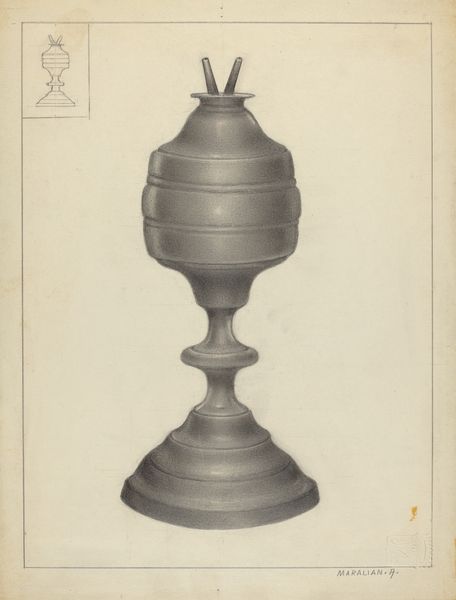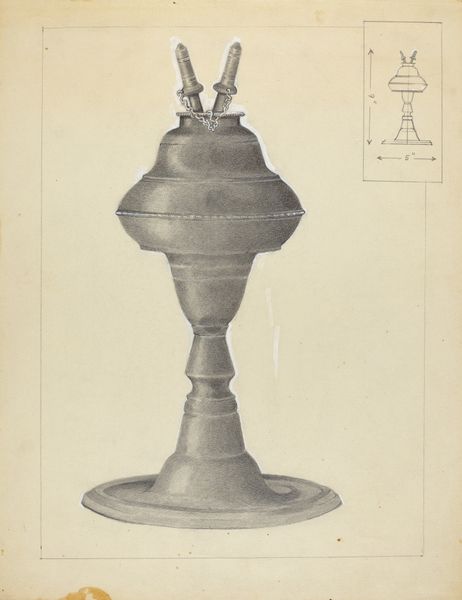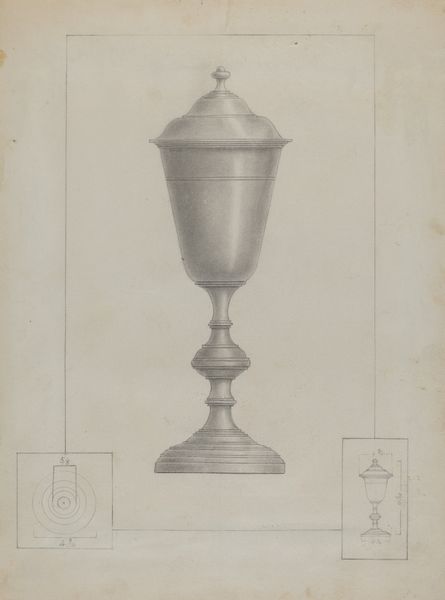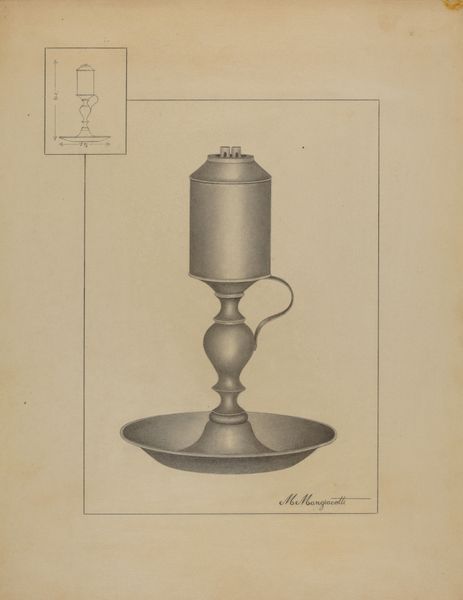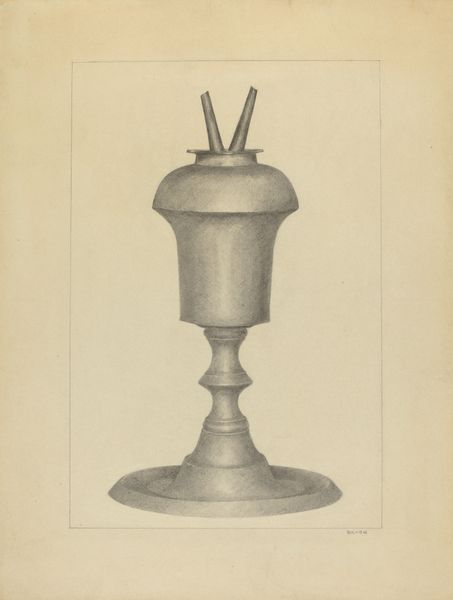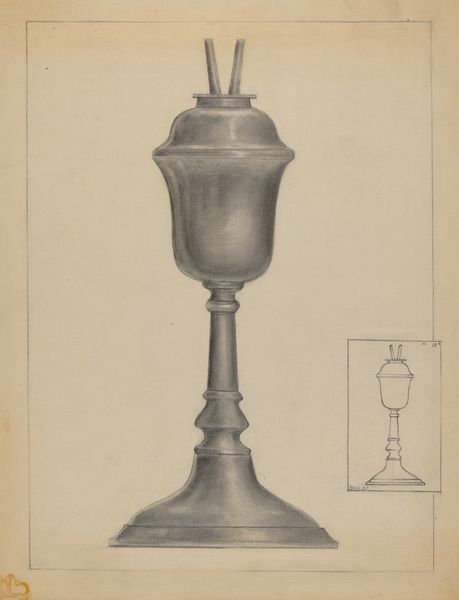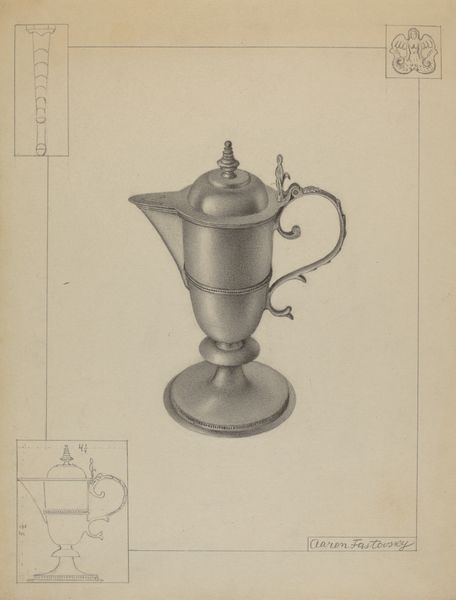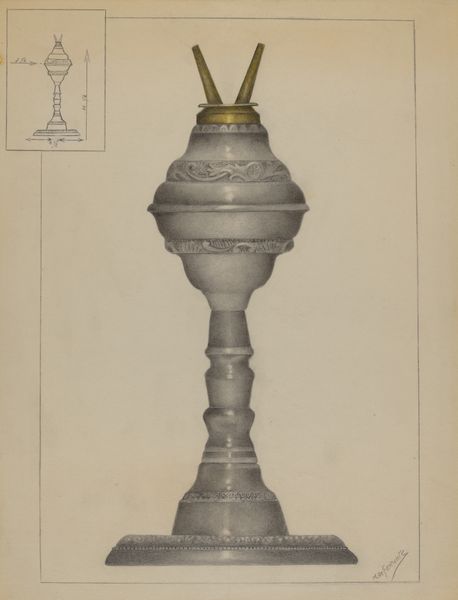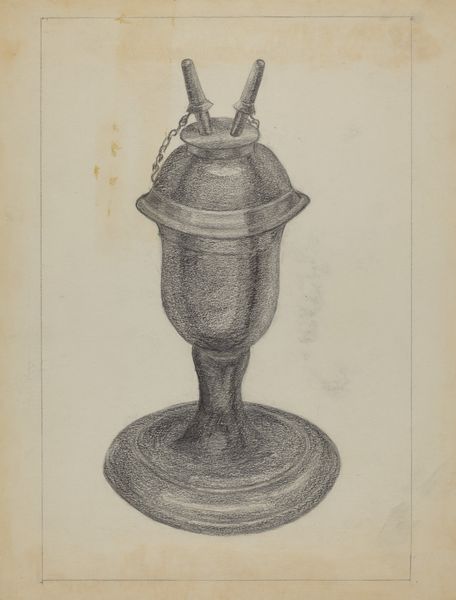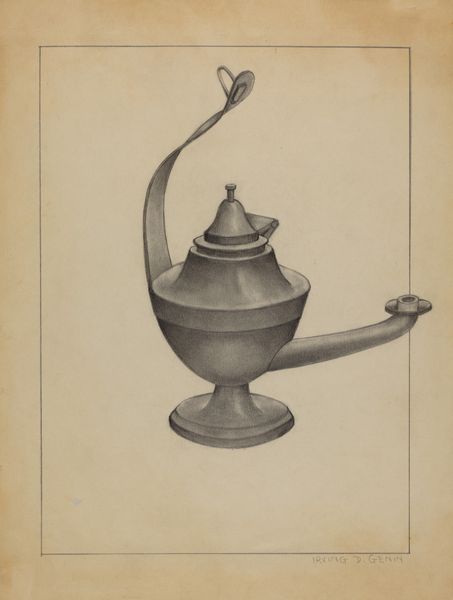
drawing, pencil
#
drawing
#
geometric
#
pencil
#
realism
Dimensions: overall: 28.9 x 22.6 cm (11 3/8 x 8 7/8 in.) Original IAD Object: 6" in diameter; 8" high
Copyright: National Gallery of Art: CC0 1.0
Curator: Welcome. Let’s turn our attention to this delicate pencil drawing. The work, titled "Swinging Lamp," was created around 1936 by Matthew Mangiacotti. Editor: It's striking how precise and… almost sterile it feels. It's as if we’re viewing the object not as an artwork, but more of a study. Curator: Exactly! Mangiacotti, during this period, was employed designing everyday objects, and so what we have here isn’t necessarily intended as high art, but rather a functional blueprint or product design. Notice the faint sketch in the upper left. Editor: You’re right. It looks technical with its dimensions. Considering the economic context of the 1930s, it raises questions about industrial design and the role of the artist. Were such drawings intended to be displayed, or were they purely utilitarian, part of the production process? The materiality—or lack thereof, as a pencil drawing—suggests a prototype rather than a finished luxury good. Curator: That's insightful. And the object itself: this lamp—it speaks to a certain streamlined aesthetic, the influence of modernism even on functional objects intended for mass production. These pieces became accessible to a broader public, shaping their aspirations for the future. The artist isn’t necessarily a visionary genius working in isolation; but becomes another worker within the design-and-manufacturing pipeline. Editor: Yes! And thinking about the making of this work, the controlled marks made from pencil on paper speaks of the constraints and creative solutions to labor in mass manufacturing and art itself. Even the shadows and subtle shading details that give the cylindrical objects its dimensionality requires skillful execution and dedication from the artist. The act of design through this specific medium provides tangible visual context into the processes in factories during this time. Curator: Absolutely, a fascinating intersection of art, industry, and societal aspirations during a transformative era. It highlights the changing role of the artist in the 20th century. Editor: I agree. Thinking about process and the labor helps us better understand this lamp both as a visual item as well as material object that can be examined beyond traditional artistic evaluation.
Comments
No comments
Be the first to comment and join the conversation on the ultimate creative platform.
